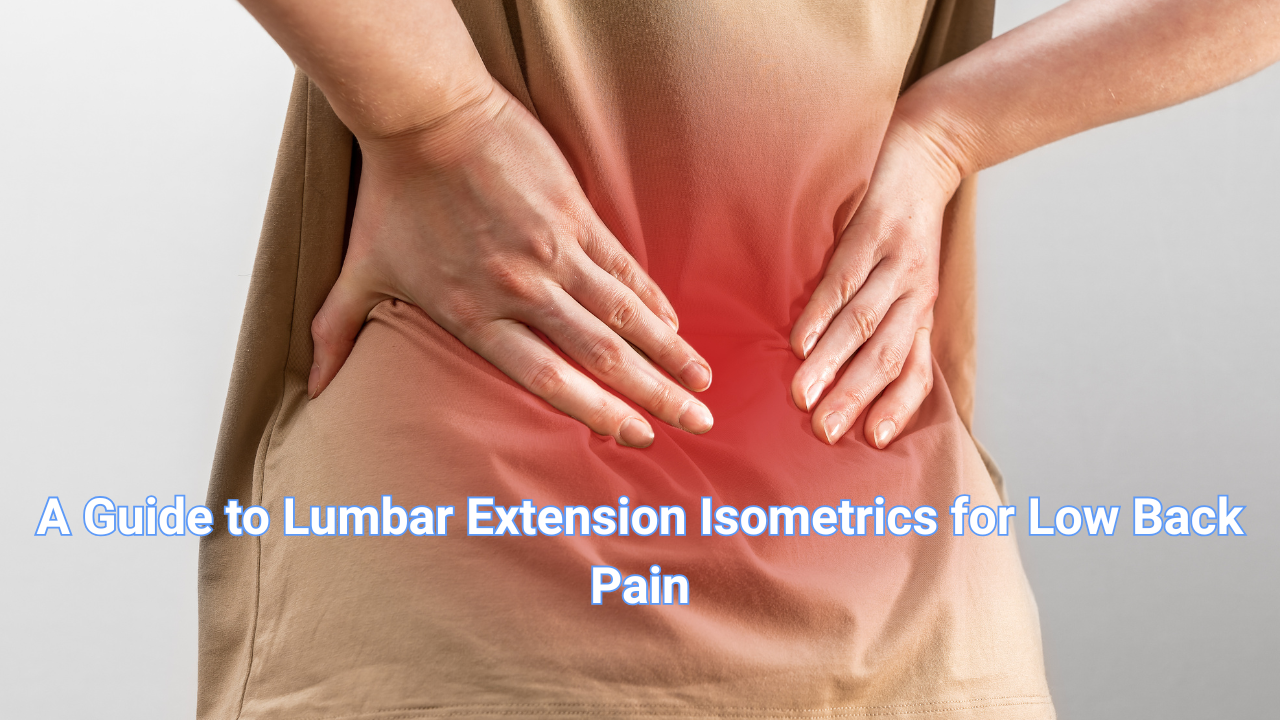The "Why": Key Mechanisms of Action
Neuromuscular Re-education
Preferentially activates and restores neural drive to the deep lumbar multifidus, a key stabilizer often inhibited in LBP.
Enhanced Motor Control
Trains co-contraction of the core, creating a "muscular corset" to enhance spinal stiffness and control painful micro-movements.
Favorable Biomechanics
Decreases intradiscal pressure and provides rich proprioceptive input, modulating pain and improving spatial awareness of the spine.
The "Who": Identifying the Ideal Patient
This intervention is most effective for patients fitting the "extension-based" classification. Use this clinical reasoning flowchart to guide selection.
Patient Population Suitability
This approach is highly effective for specific LBP populations. This radar chart illustrates the primary goals addressed for each group.
Impact on Intradiscal Pressure
Lumbar extension isometrics can significantly reduce mechanical stress on the disc compared to flexion-dominant activities.
The "How": Exercise Prescription & Progression
| Exercise | Cues & Position | Progression | Common Compensations |
|---|---|---|---|
| 1. Prone on Elbows | Lie prone, prop onto elbows. Cue: "Let hips sag, relax shoulders." | Increase hold time. | Shoulder shrugging; gluteal guarding. |
| 2. Prone "Superman" | Lie prone, lift opposite arm/leg. Cue: "Keep spine long and neutral." | Increase hold duration; add light ankle/wrist weights. | Trunk rotation; holding breath. |
| 3. Quadruped "Bird-Dog" | All fours, extend opposite arm/leg. Cue: "Keep a glass of water on your back." | Draw small circles; perform on unstable surface. | Pelvic drop/rotation; arching low back. |
| 4. Sustained Prone Isometric Hold | Prone on floor/plinth. Cue: "Maintain straight line head to heels. Brace core." | Start 20-30s holds, progress toward 1-minute goal. | Dropping head/hips. |
Intensity
Submaximal: Focus on quality of activation & endurance, not maximal effort.
Duration
Start: 5-10s holds.
Progress to: 30-60s.
Frequency
High: Multiple short sessions daily (e.g., 10 reps every 2 hours) for motor learning.
🚫 Safety First: Precautions & Red Flags
Absolute Contraindications
- Spinal Fracture
- Cauda Equina Syndrome
- Confirmed Malignancy
Relative Precautions
- Spinal Stenosis (monitor symptoms)
- High-Grade Spondylolisthesis
- Patient has no directional preference
⚠️ CLINICAL RED FLAG: PERIPHERALIZATION
If exercise causes symptoms to spread distally, stop immediately and reassess.
Get unlimited access and earn CEUs!
References
- Biering-Sørensen, F. (1984). Physical measurements as risk indicators for low-back trouble over a one-year period. Spine, 9(2), 106–119. https://doi.org/10.1097/00007632-198403000-00002
- George, S. Z., Fritz, J. M., Silfies, S. P., Schneider, M. J., Beneciuk, J. M., Lentz, T. A., ... & Vining, R. D. (2021). Interventions for the management of acute and chronic low back pain: revision 2021: clinical practice guidelines linked to the international classification of functioning, disability and health from the academy of orthopaedic physical therapy of the american physical therapy association. Journal of Orthopaedic & Sports Physical Therapy, 51(11), CPG1-CPG60. https://doi.org/10.2519/jospt.2021.0304
- Hodges, P. W., & Richardson, C. A. (1996). Inefficient muscular stabilization of the lumbar spine associated with low back pain: A motor control evaluation of transversus abdominis. Spine, 21(22), 2640–2650. https://doi.org/10.1097/00007632-199611150-00014
- McKenzie, R. A., & May, S. (2003). The lumbar spine: Mechanical diagnosis and therapy (2nd ed.). Spinal Publications New Zealand.
- Nachemson, A. L. (1981). Disc pressure measurements. Spine, 6(1), 93–97. https://doi.org/10.1097/00007632-198101000-00013



